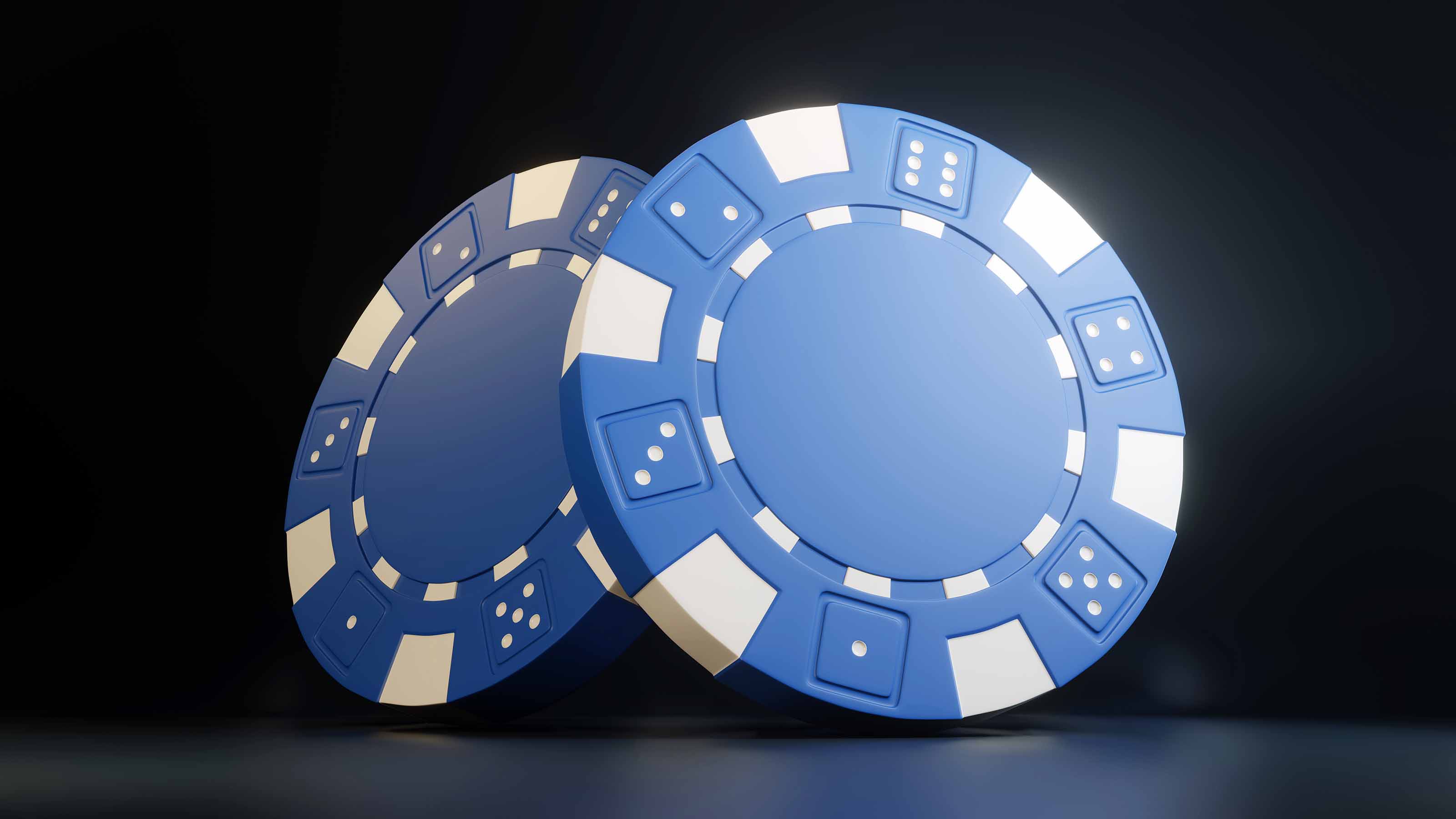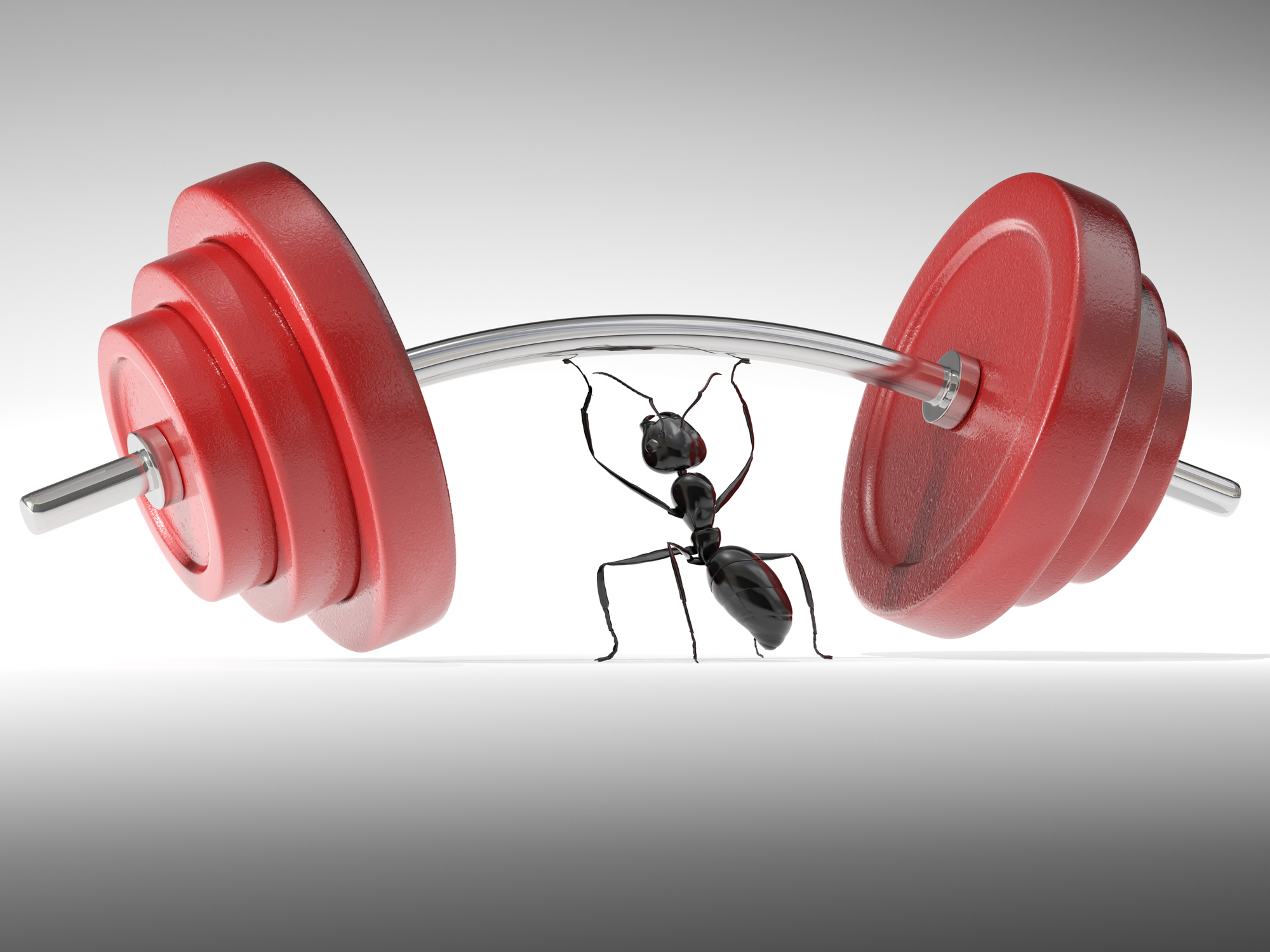6 Best Growth ETFs to Buy Now
The best growth ETFs offer exposure to higher-risk, higher-reward stocks while limiting the risk of a single stock torpedoing your returns.


Growth-focused exchange-traded funds (ETF) are as straightforward as they sound: They are portfolios of growth stocks.
But not all funds are created equal, and investors must perform due diligence in order to find the best growth ETFs to meet their goals.
By definition, a growth stock is any company with an above-average growth profile. In other words, these are companies whose revenue and earnings are expanding faster than the market average.
They also often pay little or no dividends (but not always, as you'll read later), opting instead to reinvest their cash flow in the business to maintain their growth.
This is why owning growth ETFs makes so much sense. By diversifying your growth-stock holdings through a fund, you're protecting your downside.
Funds like these tend to be cheap, efficient vehicles that allow you to invest in dozens, if not hundreds, of growth stocks without having to trade them all individually in your account.
They also allow you to be tactical, investing in sectors and industries you think are best positioned to rise going forward.
After a rough start to 2025, resolution of uncertainty about the economy, inflation and the path of Fed policy will likely "provide upside potential in earnings for growth stocks, particularly in the technology and communication services sectors," says Jeff Buchbinder, chief equity strategist at LPL Financial.
Expectations for less regulation in the Trump administration should also return the wind to growth's back.
With that in mind, here are six of the best growth ETFs to add to a core portfolio for the long haul.
Data is as of March 20.

Invesco QQQ ETF
- Assets under management: $301.6 billion
- Dividend yield: 0.6%
- Expenses: 0.20%, or $20 annually for every $10,000 invested
Buying the Invesco QQQ ETF (QQQ, $479.26) is a focused bet on 100 of the most innovative companies trading on the Nasdaq stock exchange.
While many of the best growth ETFs are heavy in technology stocks, QQQ is really loaded up at 60% of the portfolio.
It also has large positions in consumer discretionary stocks (18%) as well as smatterings of a few other sectors.
The ETF tracks the performance of the Nasdaq-100 Index. This is not only a collection of 100 of the top Nasdaq stocks, but also 100 of the largest non-financial stocks trading on the exchange.
Top QQQ stocks are Apple (AAPL) and Microsoft, who combined account for more than 18% of the portfolio.
Over the past decade, QQQ has averaged an annualized total return (price change plus dividends) of 19% versus 13.5% for the SPDR S&P 500 ETF Trust (SPY), whose tech weighting is approximately half QQQ's.
Something to keep in mind before you decide to buy.

iShares S&P 500 Growth ETF
- Assets under management: $52.2 billion
- Dividend yield: 0.4%
- Expenses: 0.18%
There are two versions of this iShares ETF: the iShares S&P 500 Growth ETF (IVW, $94.58) and the iShares S&P 500 Value ETF (IVE).
For the purpose of this list of the best growth ETFs to buy, we'll focus on IVW, which tracks the performance of the S&P 500 Growth Index, a collection of growth-oriented stocks in the S&P 500.
The growth characteristics used to select stocks for the sub-index include the three-year change in earnings per share divided by the price per share, the three-year sales-per-share growth rate and the 12-month price change.
There are roughly 210 holdings in IVW with an average market cap of $590 billion, significantly higher than its large-cap growth peers and its benchmark.
The top three sectors by weighting in IVW are technology (40%), communication services (15%) and consumer discretionary (13%). The top 10 holdings account for more than half of its $522 billion in net assets. IVW's reported turnover is 31%, which means it turns the entire portfolio once every three years.
Launched in May 2000, the iShares S&P 500 Growth ETF has averaged an annualized return of 7.7% since its inception.
A $10,000 investment 25 years ago is currently worth about $62,000. A key reason for the healthy returns is the reasonable management fee of 0.18%.

Vanguard Growth ETF
- Assets under management: $148.2 billion
- Dividend yield: 0.5%
- Expenses: 0.04%
The Vanguard Growth ETF (VUG, $378.14) charges 0.04% annually, providing investors with a low-cost option to invest in large-cap growth stocks. And at $150 billion in assets under management, it's one of the biggest growth ETFs you can buy.
This fund tracks the performance of the CRSP US Large Cap Growth Index. This index classifies growth stocks using six factors, including three-year historical growth in earnings per share and sales per share as well as return on assets.
The result is a diversified group of roughly 180 large-cap growth stocks with a median market cap of approximately $1.7 trillion. In other words, the average VUG holding is a mega-cap stock.
Tech stocks account for approximately 58% of the fund's total net assets, with consumer discretionary stocks the next highest sector weighting at 19%. VUG's top 10 holdings make up about 60% of the fund's total net assets and are led by Apple, Microsoft and Nvidia.
The growth characteristics are apparent. The portfolio's typical stock has averaged a 22% earnings growth rate over the past five years – and they're priced like it, trading at 31 times earnings and 9 times book value.
VUG, whose annual turnover is 11%, has averaged an annualized total return of 14% over the past decade.

Global X Lithium & Battery Tech ETF
- Assets under management: $974.6 million
- Dividend yield: 0.9%
- Expenses: 0.75%
The Global X Lithium & Battery Tech ETF (LIT, $41.00) tracks the performance of the Solactive Global Lithium Index, a collection of companies involved in the lithium cycle, from mining the mineral to producing lithium batteries for electric vehicles (EV) and other uses.
LIT consists of about 40 market cap-weighted stocks with a weighted average market value of $14.1 billion. The average holding has a price-to-earnings ratio of 21.7 times and a price-to-book ratio of 1.8 times.
Five sectors account for all 40 stocks in LIT: materials (43% weighting), industrials (21%), consumer discretionary (19%), technology (15%) and energy (3%).
From a country perspective, the top three by weight are China (44%), the U.S. (23%) and South Korea (10%).
Global X even breaks the weightings by industry, with materials, capital goods, technology hardware and equipment, and automobiles and components each accounting for double-digit percentages of the portfolio.
The Global X Lithium & Battery Tech ETF is fairly top-heavy, with the 10 largest holdings accounting for more than half of the ETF's approximately $1 billion in net assets.
Lithium stock Albemarle (ALB) and electric vehicle maker Tesla (TSLA) are among the fund's top positions.
LIT was launched in July 2010. In the 14 years since, it's averaged a 3% annualized total return. While its expenses are relatively high at 0.75%, the ETF provides easy access to a secular growth trend that's nowhere near ending.

SPDR S&P 600 Small Cap Growth ETF
- Assets under management: $3.3 billion
- Dividend yield: 1.2%
- Expenses: 0.15%
If you're constructing a diversified portfolio of the best ETFs, including a small-cap fund in your holdings can't hurt. The SPDR S&P 600 Small Cap Growth ETF (SLYG, $83.92) is one noteworthy option.
Launched in September 2000, SLYG has grown to $3.3 billion – a healthy size, though much smaller than the more widely known iShares Russell 2000 ETF (IWM), which has roughly $65 billion in assets under management.
SLYG tracks the performance of the S&P Small Cap 600 Growth Index, a collection of stocks found within the S&P Small Cap 600 Index that exhibit the most robust growth characteristics, including sales growth, earnings change relative to price and momentum.
The weighted average market cap for SLYG holdings is $3.5 billion, with three- to five-year earnings per share growth of 12% and a price-to-earnings (P/E) ratio of 18.
SLYG's top sectors by weight are industrials (20%) and financials (15%), with health care (14%) and technology (14%) following. Its top 10 holdings account for just 10% of the portfolio, so no one stock overly influences the fund's performance.
The biggest holdings at present include specialty materials and complex components producer ATI (ATI) and regional air carrier Alaska Air Group (ALK). The fund is reconstituted and rebalanced once a year on the third Friday in December.
Because the SPDR S&P 600 Small Cap Growth ETF only rebalances once a year, it can keep expenses low at 0.15%. It has an annual total return of 6% since inception.
Learn more about SLYG at the State Street Global Advisors provider site.

WisdomTree International Hedged Quality Dividend Growth Fund
- Assets under management: $2.8 billion
- Dividend yield: 2.4%
- Expenses: 0.58%
If you're a dividend investor, the WisdomTree International Hedged Quality Dividend Growth Fund (IHDG) is an excellent way to invest beyond domestic U.S. markets.
As the name suggests, it is an international ETF whose holdings are based outside the U.S. and Canada. It is also dividend-focused and hedged to minimize fluctuations between the U.S. dollar and foreign currencies.
The fund tracks the performance of the WisdomTree International Hedged Quality Dividend Growth Index. The index starts with the top 300 companies from the WisdomTree International Index based on growth and quality factors. The holdings are then weighted based on the annual cash dividends paid. So, if company A paid $1 a share, and company B paid $2, company B would get a higher weighting.
Its top three countries by weight are the United Kingdom (19%), Japan (18%) and Germany (10%). There is a sliver of exposure to U.S. stocks and no exposure to mainland China.
IHDG's dividend yield is a healthy 2.4% vs the S&P 500's 1.2%. Even with mediocre performance from European stocks in recent years, this top growth ETF has averaged an average annual return of 9% over the past five years.
The WisdomTree International Hedged Quality Dividend Growth Fund currently has about 260 holdings, with the largest – U.K. energy giant BP (BP) – accounting for more than 5% of the $2.8 billion in net assets.
The top three sectors by weight are industrials (20%), technology (19%) and consumer discretionary (17%).
Learn more about IHDG at the WisdomTree provider site.
Related content
Get Kiplinger Today newsletter — free
Profit and prosper with the best of Kiplinger's advice on investing, taxes, retirement, personal finance and much more. Delivered daily. Enter your email in the box and click Sign Me Up.

Will has written professionally for investment and finance publications in both the U.S. and Canada since 2004. A native of Toronto, Canada, his sole objective is to help people become better and more informed investors. Fascinated by how companies make money, he's a keen student of business history. Married and now living in Halifax, Nova Scotia, he's also got an interest in equity and debt crowdfunding.
-
 6 Stunning Waterfront Homes for Sale Around the US
6 Stunning Waterfront Homes for Sale Around the USFrom private peninsulas to lakes, bayous and beyond, Kiplinger's "Listed" series brings you another selection of dream homes for sale on the waterfront.
By Charlotte Gorbold Published
-
 Six Reasons to Disinherit Someone and How to Do It
Six Reasons to Disinherit Someone and How to Do ItWhether you're navigating a second marriage, dealing with an estranged relative or leaving your assets to charity, there are reasons to disinherit someone. Here's how.
By Donna LeValley Published
-
 Should You Still Wait Until 70 to Claim Social Security?
Should You Still Wait Until 70 to Claim Social Security?Delaying Social Security until age 70 will increase your benefits. But with shortages ahead, and talk of cuts, is there a case for claiming sooner?
By Evan T. Beach, CFP®, AWMA® Published
-
 Retirement Planning for Couples: How to Plan to Be So Happy Together
Retirement Planning for Couples: How to Plan to Be So Happy TogetherPlanning for retirement as a couple is a team sport that takes open communication, thoughtful planning and a solid financial strategy.
By Andrew Rosen, CFP®, CEP Published
-
 Market Turmoil: What History Tells Us About Current Volatility
Market Turmoil: What History Tells Us About Current VolatilityThis up-and-down uncertainty is nerve-racking, but a look back at previous downturns shows that the markets are resilient. Here's how to ride out the turmoil.
By Michael Aloi, CFP® Published
-
 Stock Market Today: Stocks Surge to Close a Volatile Week
Stock Market Today: Stocks Surge to Close a Volatile WeekIt was another day with a week's worth of both news and price action, but it ended on a strongly positive note.
By David Dittman Published
-
 Home Insurance: How to Cut Costs Without Losing Coverage
Home Insurance: How to Cut Costs Without Losing CoverageNatural disasters are causing home insurance premiums to soar, but don't risk dropping your coverage completely when there are ways to keep costs down.
By Jared Elson, Investment Adviser Published
-
 Markets Roller Coaster: Resist the Urge to Make Big Changes
Markets Roller Coaster: Resist the Urge to Make Big ChangesYou could do more harm than good if you react emotionally to volatility. Instead, consider tax-loss harvesting, Roth conversions and how to plan for next time.
By Frank J. Legan Published
-
 Why Homeowners Insurance Has Gotten So Very Expensive
Why Homeowners Insurance Has Gotten So Very ExpensiveThe home insurance industry is seeing more frequent and bigger claims because of weather, wildfires and other natural disasters.
By Karl Susman, CPCU, LUTCF, CIC, CSFP, CFS, CPIA, AAI-M, PLCS Published
-
 Stock Market Today: Uncertainty Proliferates: Dow Loses 1,014 Points
Stock Market Today: Uncertainty Proliferates: Dow Loses 1,014 PointsWeaker-than-expected consumer inflation data wasn't enough to stabilize sentiment during another volatile day for financial markets.
By David Dittman Published
